Dębica-Podkarpackie 作者: 来源: 发布时间:2021-10-22
Ⅰ. Population and Area
Population (2008)
• City 47 234
• Density 1,413.52/km2 (3,661.0/sq mi)
Area
• City 34.14 km2 (13.18 sq mi)
Website http://www.debica.pl
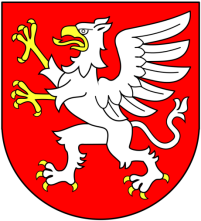
Ⅱ.Natural Geography (environment and resources)
-According to the 2006 data, Dębica's area is 33.81 square kilometres (13.05 sq mi). Arable land makes 42% of the area of the town, while forests make 19%. Dębica is the seat of the county, and the town covers 4.34% of the county's area. Dębica lies at the border of two geographical regions of Poland - the Carpathian Piedmont in southern districts of the town, and the Sandomierz Basin in its north, along the Wisłoka River.
-Tansport
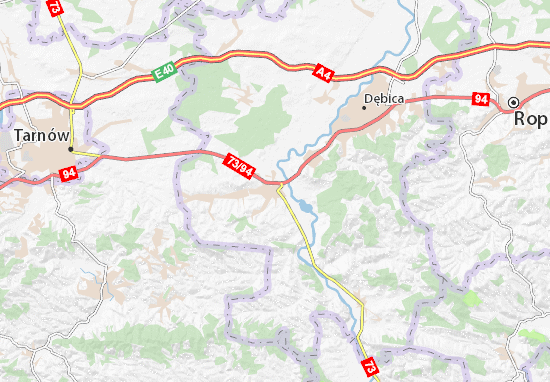
-Since the mid-1930s Dębica, in spite of its size, has been a large industrial hub. A number of companies were then created thanks to governmental industry development programs. Most of them still exist today, though they were privatized in the 1990s:
-Firma Oponiarska Dębica S.A. (Tire Company Dębica) now owned by Goodyear Tire and Rubber Company, previous name - Stomil Dębica
-Lerg S.A. - a chemical manufacturer located in the village of Pustków, a village in Dębica County
-Tikkurila Polska S.A. (formerly Polifarb Dębica) - a paint manufacturer
-Wytwórnia Urządzeń Chłodniczych WUCh (Freezer Appliances Producer WUCh)
-Zakłady Mięsne (Meatworks)
-Since the early 1990s a relatively large number (in proportion to the city's size) of successful companies have been started and run by local residents:
-bicycle, motorcycle and electric car manufacturer Arkus and Romet Group
-Sportatut - producer of sports nutritionals
-chemical industry manufacturers (paint producers such as Śnieżka Brzeznica and Plastbud Pustków)
-marble producer Jabo Marmi and brickyard Igloobud
-food companies such as Igloomeat and Animex Poludnie
-Nearest major airport to Debica, Poland: The closest major airport to Debica, Poland is Rzeszów-Jasionka Airport (RZE / EPRZ). This airport is in Rzeszow, Poland and is 53 km from the center of Debica, Poland.
-The Construction of the A4 Motorway from the Dębica
-Pustynia interchange to the Rzeszów Zachodni
-Interchange, along the section from the 537th km + 550 to the 570th km + 300. We constructed approx. 32 km of the Motorway with A-Class road technical parameters, and a grade—separated motorway interchange in Ropczyce, and intersections with crossed roads. We constructed 12 motorway flyovers, 12 flyovers, 8 road bridges, 3 animal crossings above the ground, and 2 crossings under the motorway. In addition, we also completed motorway service areas (MSAs), toll collection
-System (TCS), the construction and redevelopment of the network and infrastructure conflicting with the motorway, underground drainage, the construction of run—off cleaning systems and approx. 33,440 m of noise barriers.
Ⅲ.Economy
-Since the mid-1930s Dębica, in spite of its size, has been a large industrial hub. A number of companies were then created thanks to governmental industry development programs. Most of them still exist today, though they were privatized in the 1990s:
-Firma Oponiarska Dębica S.A. (Tire Company Dębica) now owned by Goodyear Tire and Rubber Company, previous name - Stomil Dębica
-Lerg S.A. - a chemical manufacturer located in the village of Pustków, a village in Dębica County
-Tikkurila Polska S.A. (formerly Polifarb Dębica) - a paint manufacturer
-Wytwórnia Urządzeń Chłodniczych WUCh (Freezer Appliances Producer WUCh)
-Zakłady Mięsne (Meatworks)
-Since the early 1990s a relatively large number (in proportion to the city's size) of successful companies have been started and run by local residents:
-bicycle, motorcycle and electric car manufacturer Arkus and Romet Group
-Sportatut - producer of sports nutritionals
-chemical industry manufacturers (paint producers such as Śnieżka Brzeznica and Plastbud Pustków)
-marble producer Jabo Marmi and brickyard Igloobud
-food companies such as Igloomeat and Animex Poludnie
-Labor market, industry, trade, services
-Dębica offers a rich technical infrastructure, social and educational facilities, and the business-related companies operating here provide consulting, financial, design, insurance and legal services. Dębica offers potential investors free and developed plots intended for industrial, service and commercial activities.
-Investments in our city mean low costs of labor, goods and services, and competitive prices of investment goods. Investors creating new jobs can count on professional help from the employees of the City Hall and institutions supporting economic initiatives.
-Since the establishment of the Central Industrial District in the 1930s, Dębica has retained its economic character. Several thousand production, service and commercial companies, representing a high level of technology, operate in the city. The well-trained staff is also an advantage.
-Dębica is a city open to guests, investments and new cooperation proposals, looking for new business contacts or looking for a business partner.
-Age structure of inhabitants
-Among the inhabitants of Dębica, the most numerous age group are people aged 20 to 29. In 2006, it was 8,750 or 18.67 percent of the population. The next place in terms of the number of people in the age structure is occupied by residents aged 40-49 - 15.28%. Between the ages of 50 and 59, he is 14.4 and between the ages of 30 and 39 he is 12.47.
-Employment structure
-Most people are employed in industry and construction, almost 48 percent. Another 29 percent are employees of the market services sector and 23 percent of non-market-services.
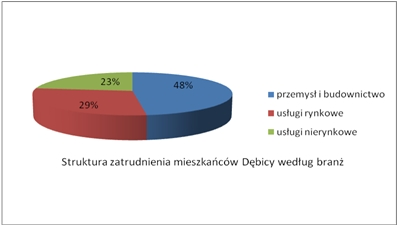
https://en.wikipedia.org/wiki/D%C4%99bica#Economy
http://www.debica.pl/
Ⅳ.Industrial Characteristics
-The future of the city
-Dębica is focused on the development of industry, tourism and recreation, communication, construction and services.
-The dominant industries in Dębica are:
-chemical
-construction
-processing and agri-food
-mechanical
-logistics and transport
-publishing
-meat
-The company’s existing in the city indicates that the qualified workforce allows for undertaking technologically advanced production activities: industrial automation, electronics, and electromechanical equipment. Due to the location of large companies here, road freight transport companies have developed dynamically. There are also medium-sized and large public sector enterprises and numerous small and medium-sized production and service establishments (tourism, trade, transport, logistics, communications, and banking). Currently, the greatest processing potential is concentrated in the meat, fruit and vegetable and chemical industries.
-Dębica means lower costs of running a business and definitely cheaper services than in metropolitan centers.
-Our strengths are:
-- Lower remuneration
-- Lower taxes
-- Lower prices of land and buildings
-- Lower purchase and rental prices of apartments and houses
-- Lower prices of hotel and boarding
-- Lower rental prices of offices and production halls
-- Well-developed infrastructure
-- Convenient location
-- Tourist and recreational attractions
-- Excellent base sports
-Support for investors
-In addition, investors can count on shortening to minimum administrative formalities - the so-called "Fast track" of investor service. In addition, each investor's inquiry is met with a quick offer tailored to specific requirements, presented by the Office for Cooperation with Entrepreneurs of the City Office in Dębica, dealing with servicing companies and investors. For investors who create new jobs, there are appropriate tax exemptions, both in terms of land tax and certain privileges, depending on the number of jobs created. In addition, the City Council in Dębica, in order to promote investments in the city in the field of production and services and to create new jobs, adopted a resolution on real estate tax exemption for buildings or their parts,
-Business environment institutions
-Dębicki Business Club - The Dębicki Business Club Association is a voluntary, self-governing, permanent association of natural persons running a business, legal persons and managers. Its functioning is based on the community work of its members, who want to create a common forum for business in Dębica.
-The activity of the association began in February 2006, when entrepreneurs from Dębica undertook the task of creating a community working for business, not forgetting the local community. The association wants to support all economic entities that contribute to building a stronger image of Dębica.
-Guild of Craft and Entrepreneurship- The organization brings together owners of small businesses, craftsmen and traders. Represents the interests of members in talks with authorities and contractors.
-Companies operating in Dębica
-The main factor in the development of Dębica was industry, the pre-war one that was constantly expanded and new, created from scratch. Thanks to his products, Dębica has become a well-known city. In the interwar period, it was included in the plans of the Central Industrial District. A tire factory and a ker factory were established in Dębica, a rolling mill for non-ferrous metals in Desert, and an explosives factory in Pustków.
-Igloopol had a significant share in shaping the industrial and civilizational image of the city, which due to its uniqueness, size and scope of activity was a significant entity in the Polish economy for almost 20 years, especially in the period from 1970 to 1990. Igloopol was the first joint stock company in post-war Poland. In the period of its greatest development, it was a concern employing 34 thousand people. Employees, being the largest employer in the country. Almost 400 thousand cooperated with the company farmers.
-At that time, the company was one of the largest Polish exporters of agricultural products; it had its own foreign trade center and its commercial outlets abroad. At that time, the company was also a significant patron of cultural and sports activities (it supported many sports clubs, including the first league clubs).
-On the basis of the Igloopol company, after 1990, prospering enterprises were created, such as Igloomeat Sokołów, Igloobud, Igloocar, Chłodnie Dębica.
-The changes that took place after 1990 did not slow down the local economy, however they slowed it down a bit, leading to changes and transformations. These changes also affected many large companies in Dębica. One of the largest Polish producers of car tires "Stomil" Dębica has become part of the American concern "Goodyear". The takeover of the company by a new investor made it possible to restructure the plant and modernize the production technology, which makes the company a major manufacturer of car tires on the world market and the largest production company in Debica.
-The company Polifarb Dębica also has a significant position on the economic map of the city - currently TBD SA, which is part of the Finnish concern Tikkurila OY. Structural and ownership changes of the company in recent years have enabled the modernization of the plant and production technology, were also associated with the restructuring of employment as well as the creation of smaller, independent entities operating on the basis of restructured departments and providing services for the parent company, e.g. Can-pack General line sp. z o. o. - producer of packaging for the chemical industry.
-In addition to the above-mentioned enterprises, the industrial potential of the city is also created today by, among others, such companies as Trans-Południe, Bratex, Kanwil, Animex Południe, Pesam, Hand-Bud, Dexpol. Ocynkownia - Polimex Mostostal Siedlce, Rufus - manufacturer of precision mechanical parts for the aviation industry, Pex-Pool, which is a well-known producer of power generators for civil and military purposes, used by the Polish army, among others in Kosovo and Iraq, Darco - producer of ventilation devices.
-Some companies have moved their activities to the outskirts of the city, just beyond its borders, but they are commonly considered as Dębica. They include, among others Fabryka Farb i Lakierów "Śnieżka", Zakład Obróbki Marmuru "Jabo Marmi", producer of dietary supplements and nutritional supplements for sportsmen, "Olimp Laboratories" Sp. z o. o., Arkus-Romet - bicycle manufacturer.
-Dębica is not only production companies but also dynamically developing services and trade. There are almost 1,800 service companies and almost 1,600 companies and retail outlets operating in the city. International retail chains operate here, including the supermarkets Leader Price, Musquetaires, Albert, Lidl, Kaufland, and Carrefour.
-During the annual celebration of the Dębica Days, small and medium-sized enterprises have the opportunity to present their offers at the "Let's go back to Polish products" fair.
-Key projects
-1. Modernization of the Municipal Cultural Center in Dębica in order to give it the function of the Regional Center for Social and Cultural Initiatives.
-Project goals:
-The main goal of the project is to create optimal conditions for conducting cultural activity by modernizing and expanding the infrastructure of cultural institutions.
-The specific objectives of the project are: improving the condition of the cultural infrastructure of DK MORS, increasing access to the cultural offer for residents of the Dębica-Ropczyce Functional Area, increasing the potential of cultural institutions.
-Modernizacja Miejskiego Ośrodka Kultury - Urząd Miejski w Dębicy - oficjalna strona internetowa http://debica.pl/strony/projekty-unijne/modernizacja-miejskiego-osrodka-kultury
-2. Renovation of the historic part of the Śnieżka Culture Center in Dębica
-Project goals:
-The aim of the project is to restore the role of the historic Śnieżka Culture Center as a place of special importance to the cultural heritage of the Dębica region.
-The specific objectives are to improve the technical condition of the building and the functionality of the premises of DK Śnieżka, to secure the monument and cultural institutions together with the surroundings in case of threats.
-Renowacja zabytkowej części Domu Kultury Śnieżka w Dębicy - Urząd Miejski w Dębicy - oficjalna strona internetowa http://debica.pl/strony/projekty-unijne/renowacja-zabytkowej-czesci-domu-kultury-sniezka-w-debicy
Ⅴ.Attrations and Cityscape
-Top Places for Art and Cultural Activities in Debica
-A trip to Debica cannot be complete without understanding its rich heritage. The art and cultural activities in Debica will give you an insight into the city's history, traditions, and artwork. While visiting the cultural attractions in Debica would prove to be informative, attending its artsy events will leave you entertained. From cultural performances to historical monuments that give you a glimpse of the past, take a look at this list to know Debica better. Include these in attractions in your itinerary for Debica and have a great vacation.
-Tourist attractions
-St. Jadwiga's Church
-- parish church, originally built in the 16th century, later rebuilds.
-manor house
-partly in the district of Wolica and partly in Latoszyn southwest of the city.
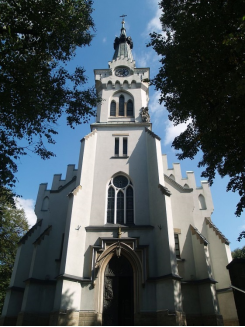
Church of St. Jadwiga first erected in the 14th century
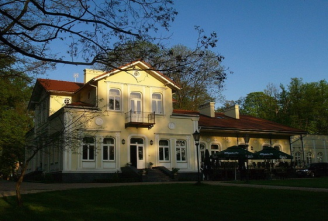
Late 19th-century manor
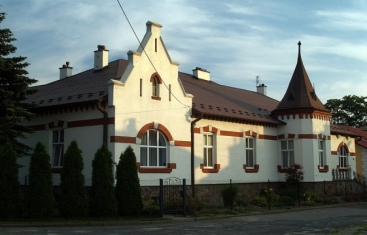
Early 20th-century villa
Ⅵ.History and Culture
-Middle Ages
-One of the oldest documented references to this area dates back to the year 1293. It records a settlement by the name of Dambicha, belonging to the noble Gryfita family. In 1305, the village was raided by the Tatars, who burned a wooden church. The church was rebuilt in 1318, and by 1325, Dębica was the seat of a deanery, located on the outskirts of the mighty Sandomierz Forest. The Dębica Deanery consisted of fourteen parishes, among them Przecław, Sędziszów Małopolski, and Strzyżów.
-In 1358 King Casimir III the Great gave a local nobleman Świętosław Gryfita permission to found a town, and Dębica received town rights, together with a privilege to organize weekly markets on Wednesdays. The town, however, was not actually founded until June 10, 1372, when Mikołaj of Lipiny was named its first wójt. Dębica was conveniently located along the main merchant route from Kraków to Lwów, but the newly established town was unable to compete with older urban centers of the area, Pilzno and Ropczyce. In 1446, King Władysław III of Poland allowed annual fairs to be organized on Ash Wednesdays, which resulted in the quick development of the town. For many years however, Dębica was a small town, located in the Pilzno County, Sandomierz Voivodeship, province of Lesser Poland. Lacking a defensive wall that would defend it, it was vulnerable to invasions of the Tatars, Swedes, and Hungarians, who burnt or ransacked the town every few years. As a result of these events, there are few historical monuments in Dębica. One of these is the Saint Jadwiga church, originally from the 14th century, but completely rebuilt in the late 19th century.
-In 1474, Dębica, together with other towns of southern Lesser Poland, was ransacked by the Black Army of Hungary. In 1502, a Crimean Tatar raid caused widespread destruction, and as a result of it, the town was burned and depopulated.
-Early modern era
-To prevent the complete disappearance of Dębica, its owners exempted residents from all taxes for 14 years, also allowing them to collect free timber and firewood in local forests. In 1504, Dębica was exempted from royal taxes by King Alexander Jagiellon. Due to all these privileges, Dębica emerged in the 16th century as a local center of skilled craftsmen. Still, it was much smaller than Pilzno and Ropczyce, also because it remained a private town, whose owners argued with each other. In 1554, most of Dębica burned down, together with the wooden parish church of St. Margaret. In the late 16th century, the population of the town was app. 700.
-Like almost all Lesser Poland's towns and cities, Dębica was completely destroyed in the Swedish invasion of Poland, when Swedes and Transylvanians of George II Rakoczi burned and ransacked the town (1655 - 1660). After the invasion, the population of Dębica was reduced to app. 200, with only 30 houses. As a result, the owners of the town allowed the first Jews to settle in Dębica. The first settlers arrived in 1676–1690. They expanded the town's population, and had a positive influence on the town's economy.
-In the late 17th century, the so-called New Dębica was established, around the now non-existing St. Barbara church, app. one kilometre (0.62 miles) west of Old Dębica. Both Dębicas had different mayors, who were governed by one wójt. In the course of time, the towns merged, and the market square of New Dębica now serves as the center of the town. Dębica was completely destroyed during the Great Northern War, and the destruction was so severe that the town slowly turned into a farming village. In the late 18th century, it belonged to the Radziwiłł family.
-Late modern era
-A battle between Poles and Russians took place here during the Bar Confederation, and in 1772, as a result of the First Partition of Poland, Dębica was annexed by the Habsburg Empire, as part of newly established Galicia, where it remained until November 1918. Austrian authorities decided that it should no longer be regarded as a town, but rather a village and renamed it Dembitz. This decision marked the decline of the town.
-Bad times came to an end in the second half of the 19th century, when the Austrian government decided to build a main West-East railroad line (see Galician Railway of Archduke Charles Louis), connecting two major urban centres of Galicja - Kraków and Lwów. A railroad station was built in Dębica, and at the end of the 19th century, another, northbound line was constructed, joining Dębica and the town of Sandomierz, which was located on the Austrian-Russian boundary. The town became a rail junction, which was a huge boost for its citizens. In 1900 a high school was opened, and in 1908 students from this school founded one of the oldest sports clubs in Poland, Wisłoka Dębica (whose name comes from the River Wisłoka, which flows by the town). Just before World War I, Dębica was again incorporated as a town. The war was a disaster for the town, as it was almost completely destroyed. During several campaigns, Dębica was occupied by Russian, Austrian, Hungarian and German troops, which fought in this area for many months in 1914 - 1915. The Entente Powers wanted to get through the Carpathian Range towards Slovakia, Bohemia and Hungary, while the Central Powers managed to stop them at the beginning of 1915. These events had a great impact on the town and hampered its development for many years.
-In 1918, after Poland regained independence, Dębica was included in the Kraków Voivodeship, in the county of Ropczyce. The economic situation of the town did not change - there was no industry, very few jobs available and surrounding villages were strongly overpopulated. This started to change in 1936, when Polish government announced the creation of the Central Industrial Area. It was a huge public works project, aimed at fighting unemployment in this overpopulated part of Poland, as well as creating heavy industry, concentrated on the production of arms. Dębica started to develop very fast; so fast, that in 1937 the county's capital was moved here from Ropczyce. Among several factories built in the town at that time, the most important was Stomil (now called Tire Company Dębica, and belonging to the Goodyear). Other factories were: Wytwórnia Urządzeń Chłodniczych WUCh and Zakłady Tworzyw Sztucznych "Pustków", built from scratch, together with a workers' settlement, in Pustków Osiedle, 15 km (9.3 mi) northeast of Dębica. Sometime in 1938 or 1939 work on another rail connection from Dębica to Jasło, via Pilzno was started. the Second World War stopped this construction, and after the war it was not continued.
-World War II
-The occupation of Dębica by Nazi Germany started on September 8, 1939. The Germans created a ghetto for the town's Jewish population, eventually killing most of them either on the spot or in the Auschwitz concentration camp. In the forested hills south of the town, strong underground forces operated, with numerous units of the Home Army (AK). It was too dangerous for AK officers to stay in Dębica, thus the headquarters of a local underground district (known as Deser) were located at a nearby village of Gumniska, located in the hilly area south of the town. Resistance fighters were very active here, often attacking the main Kraków-Lwów rail line, used by German troops. In early 1944, units of the local Armia Krajowa district unsuccessfully tried to blow up a train with Hans Frank, which was passing through the village station at Czarna Tarnowska, some 15 kilometres (9 miles) west of Dębica. As a reprisal, on February 2, 1944, the Germans murdered 50 Poles by the rail track in Dębica (also see Otto Schimek).
-Reconstructed camp barracks with a watchtower and the barbed-wire fence in the village of Pustków
-On the outskirts of Dębica in the village of Pustków near Blizna and several neighboring ones, the Germans established a massive military base in the fall of 1941 for weapons testing and the training of new Ukrainian collaborationist military formations including the SS Galizien Division. It is estimated that over the duration of the SS Heidelager training base operation, some 15,000 slave-labour prisoners perished there, including 7,500 Jews, 5,000 Soviet POWs, and 2,500 Poles, on top of an estimated 1,000 Soviet soldiers who died in the area during the Nazi-Soviet war. Their remains are buried in the cemetery along the road to Pustków Drips. Originally, the cemetery was located inside the ring IV (Dąbrówki). Later, the graves of soldiers were exhumed and moved. A Russian colonel killed in the fighting is buried in one of the tombs.
-Implicated in war crimes was SS-man Alois Kurz (ID 382378) who, from 1940 to 21 April 1941, served in the SS Regiment Westland, then was assigned to a construction battalion for the SS training ground and labor camp serving the SS Truppenubungsplatz Heidelager (de) in Pustków. Also implicated in war crimes was Wilhelm Schitli, commander of the "Jewish camp" at the SS training area HL-Heidelager from October 1942 to September 1943.
-Post-war
-After the war, in new, Communist Poland, Dębica again became the seat of a county, but the town was moved from the Kraków to the Rzeszów Voivodeship. In 1946, executions of anti-communist activists took place there (Public execution in Dębica (1946)). War destruction again stopped the town's development, but recovery this time was fast and based on pre-war factories. In 1975, after administrative reform, counties in Poland ceased to exist and were replaced by numerous and small Voivodeships. Dębica again was moved - this time from Rzeszów to the newly created Tarnów Voivodeship. In the late 1970s, Dębica gained importance as a centre of food and agricultural production. This was due to the creation of Kombinat Rolno-Spozywczy Igloopol, which, under an influential Communist dignitary Edward Brzostowski, developed very fast. Igloopol built a huge factory and a completely new district, with numerous condominiums, located on the northern side of the rail line. The company achieved its peak in the late 1980s. After the collapse of the Communist regime, the company was divided into several smaller firms, controlled by former Communist activists.
Ⅶ.Other Information
-Dębica is a town in southeastern Poland with 46,693 inhabitants, as of 2 June 2009. It is the capital of Dębica County. Since 1999 it has been situated in the Podkarpackie Voivodeship; it had previously been in the Tarnów Voivodeship (1975–1998). Dębica belongs to the historic province of Lesser Poland, and for centuries it was part of the Sandomierz Voivodeship.
Ⅷ.Contact Information
Mayor Mariusz Szewczyk
City Hall in Dębica 39-200 Dębica ul. Ratuszowa 2
Tel. (14) 683-81-00
Fax. (14) 683-81-61
E-mail: umdebica@um.debica.pl
NIP: 872-10-00-477
